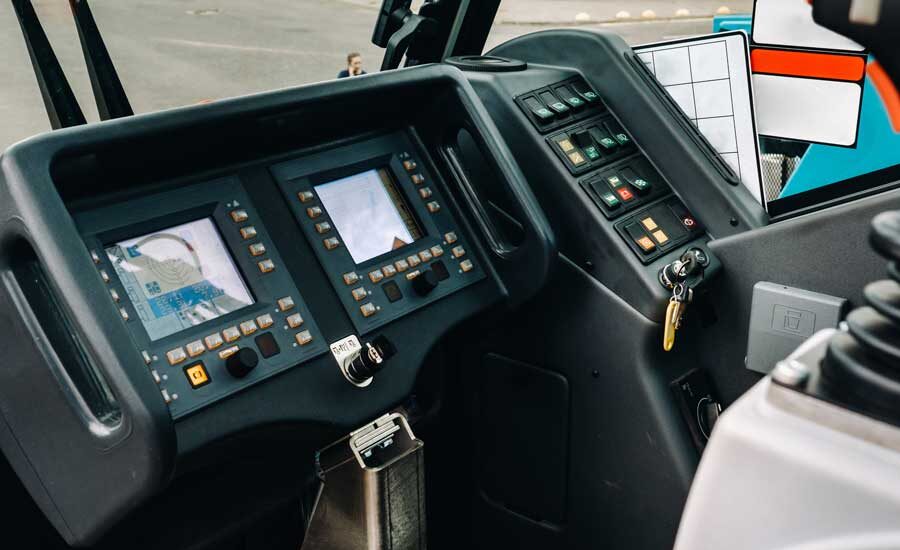Key Takeaways:
- Drivers can operate without ELDs under the short-haul exemption. This requires staying within a 150-air-mile radius and following a 12-hour daily driving limit. Exceeding these limits requires ELD use.
- ELD exemptions for local drivers vary by industry and vehicle type. Agriculture may have specific regulations. Non-CDL vehicles may be exempt unless certain thresholds are exceeded. It is important to check industry-specific rules and local regulations.
- Vehicle weight, classification, and commerce type influence ELD requirements. Heavier vehicles or interstate travel usually require ELDs. Intrastate travel and lighter vehicles may qualify for exemptions. Understanding these factors is important.
- Even with ELD exemptions, accurate record-keeping remains necessary. Drivers must maintain time records and supporting documents such as fuel receipts to verify hours of service.
- Staying updated on FMCSA regulations is important. The FMCSA regularly publishes updates that may change ELD requirements and exemptions. Regular consultation of these resources guarantees compliance.
Table of Contents
Understanding Mileage Limitations and ELD Exemptions
Electronic Logging Devices (ELDs) have become a standard requirement for most commercial drivers. However, there are specific situations wherein drivers may operate miles run without ELD. Understanding when and how this applies is important for maintaining compliance with federal regulations.
The ELD mandate requires drivers of commercial motor vehicles (CMVs) to use an electronic device to log their hours of service. This mandate was introduced to improve road safety and guarantee drivers adhere to regulated working hours. The purpose is to prevent fatigue-related accidents and improve the accuracy of driving records.
ELDs are essential for most commercial drivers. Certain ELD exemptions allow drivers to operate without an ELD. These exemptions vary based on factors such as the vehicle’s weight, the nature of the operation, and the distance driven. For instance, the short-haul exemption applies to drivers who stay within a specific operating radius and do not exceed the mileage limits. Additionally, non-CDL vehicles used in certain operations may not require an ELD.
Understanding how many miles can you drive without an ELD is essential for local drivers, as they may qualify for ELD exemptions for local drivers based on the nature of their routes and the industries in which they operate.

How Many Miles Can You Drive Without an ELD?
For many commercial drivers, the ELD mandate requires the use of Electronic Logging Devices to track hours of service and guarantee compliance with regulations. However, not all drivers must use an ELD. The short-haul exemption allows some drivers to operate miles run without ELD under certain conditions. Understanding the rules surrounding the short-haul exemption is important for drivers who want to know how they can operate without an ELD.
The short-haul exemption applies to drivers who cater to particular criteria. First, these drivers must operate within a 150 air-mile radius of their starting point. The exemption also allows drivers to work up to 12 hours of driving time in a single day.
Drivers must return to their starting point within the same workday to remain exempt. If a driver exceeds these limits, they must use an ELD to track their hours. This exemption benefits drivers who work within a localized area and typically do not exceed these time and distance limits.
The concept of operating radius has a critical role in determining exemption eligibility. The 150 air-mile radius refers to the distance a driver can travel from their starting point without requiring an ELD. It is important to note that these miles are measured in straight-line or air miles, not the actual miles driven on the road. A driver operating outside this 150-mile radius is no longer eligible for the short-haul exemption and must use an ELD to log their hours.
Drivers working under the short-haul exemption are subject to a daily driving limit. They cannot exceed 12 hours of driving time in a 24-hour period. This limit helps balance the needs of local drivers with safety concerns. The exemption resets every 24 hours, so drivers can drive for 12 hours on one day and another 12 hours on the next, as long as they comply with the time and distance limits.
The records help guarantee compliance with hours of service regulations. Drivers must document their starting and ending times, total hours worked, miles driven, and times of arrival and departure. These records must be available for inspection if requested. Even without an ELD, accurate record-keeping is essential for verifying that drivers are operating within the exemption limits.
Drivers can operate miles run without ELD under the short-haul exemption if they stay within a 150 air-mile radius from their starting point and limit driving time to 12 hours per day. These exemptions are beneficial for local drivers who work within specific industries or regions. However, it is important to stay within the prescribed limits to avoid the need for an ELD.
ELD Exemptions for Local Drivers
Local driving refers to operations that occur within a specific, limited area. In the context of ELD exemptions for local drivers, this typically involves driving within a 150-air-mile radius of the driver’s work reporting location. Local drivers operating within this radius may qualify for an ELD exemption. The short-haul exemption allows these drivers to log their hours using paper logs or timecards instead of relying on ELDs.
Certain industries may qualify for additional eld exemptions for local drivers based on the nature of their work. One example is the agriculture sector. Agricultural drivers often operate within a limited area to transport crops or livestock. These drivers are typically exempt from using ELDs, provided they accomplish specific mileage and operating radius conditions.
The exemption guarantees that these drivers can carry out their duties without unnecessary burdens while still adhering to safety and time restrictions. It is essential to check specific industry rules as certain nuances may apply depending on the local regulations and the type of goods being transported.
Non-CDL vehicles also have a part in determining ELD requirements. Non-CDL vehicles, which are vehicles that do not require a commercial driver’s license to operate, are subject to different regulations compared to CDL vehicles. In many cases, these vehicles fall outside the ELD mandate, particularly when they are used for local driving.
Mileage limits are important for local drivers, especially in understanding when they can operate without an ELD. For most non-CDL vehicles, the exemption applies if the vehicle is used exclusively within the designated operating radius, typically 150 air miles from the work reporting location. Once the vehicle exceeds this radius, the ELD requirements may apply. Drivers should also remember that the short-haul exemption is contingent upon the vehicle’s weight and its operation for non-commercial purposes.
In conclusion, local drivers who qualify for the short-haul exemption or other eld exemptions for local drivers must carefully track their operating radius and mileage to avoid unnecessary compliance issues. Non-CDL vehicle operators should also consider whether their vehicle exceeds the limits that would require ELD use. Proper understanding of these rules guarantees smoother operations while remaining compliant with federal regulations.

Mileage Limits and Vehicle Types
Vehicle weight and classification are important factors that influence mileage limits and whether a vehicle is subject to Electronic Logging Device (ELD) requirements. The Gross Vehicle Weight Rating (GVWR) of a vehicle has a significant role in determining ELD applicability.
Vehicles that exceed a weight of 10,001 pounds typically require ELDs if they attain other criteria, such as being involved in interstate commerce. Vehicles under this weight limit are not subject to the same ELD requirements, although this can vary depending on the operation specifics. Vehicles under 10,001 pounds used for personal or non-commercial purposes may not need to follow ELD regulations.
Vehicle types also have a critical role in understanding ELD exemptions. Different types of vehicles may have specific rules based on their intended use. Non-CDL vehicles usually follow different requirements compared to commercial vehicles needing a Commercial Driver’s License (CDL).
Non-CDL vehicles are generally not subject to ELD requirements unless they exceed certain thresholds like weight or mileage limits. Identifying the type of vehicle in use helps drivers and fleet operators determine whether an ELD is necessary based on the vehicle’s classification and operational parameters.
Interstate vs. Intrastate commerce influences mileage limits and ELD exemptions. Interstate commerce involves transportation crossing state lines, whereas intrastate commerce remains within one state. Vehicles engaged in interstate commerce are typically subject to ELD mandates, especially if they reach the weight and usage criteria. The purpose of the ELD mandate is to monitor driving hours to guarantee safety during long-haul operations.
Intrastate vehicles, however, may be subject to different rules. Many states grant exemptions for intrastate drivers, meaning they do not need to use ELDs even if they exceed the federal weight and mileage thresholds. Some states impose their own regulations and may still require ELDs for intrastate vehicles depending on factors like mileage limits or weight.
In terms of mileage limits, interstate drivers who travel more than 150 air miles from their base usually need an ELD. In contrast, intrastate drivers who operate solely within their state may be exempt from ELD use, even if they exceed the 150-mile limit. Certain states allow exemptions for agricultural vehicles or utility vehicles under specific conditions. These exemptions often relate to the nature of the work and the type of goods transported.
Vehicle weight, classification, and the type of commerce being conducted determine ELD necessity. Fleet operators and drivers should carefully assess their vehicles’ classifications and operations to determine the applicable mileage limits and ELD requirements. Generally, heavier vehicles or those operating across state lines are more likely to need ELDs. However, intrastate operations and lighter vehicles may qualify for exemptions under specific conditions.
Understanding these factors is essential for maintaining compliance with regulations. Drivers and fleet managers should be aware of the weight, vehicle types, and type of commerce involved to effectively manage the regulations regarding ELD requirements and exemptions. This awareness helps avoid fines or disruptions to operations.
Other Circumstances for ELD Exemptions
Pre-2000 Vehicles
Vehicles manufactured before a specific model year may be exempt from ELD requirements. The Federal Motor Carrier Safety Administration (FMCSA) provides this exemption for vehicles built before the year 2000. These vehicles are not required to be equipped with ELDs, regardless of their weight or the type of commerce in which they are engaged.
This exemption primarily applies to older vehicles that do not have the technological capabilities to support the modern ELD systems. Fleet operators using pre-2000 vehicles can still track hours of service (HOS) through paper logs or other methods, as long as the vehicle falls within this exception. However, it is important for operators to verify that their vehicle reaches the criteria and properly track HOS to comply with other regulatory requirements.
Driveaway-Towaway Operations
Another exemption applies to drivers involved in driveaway-towaway operations. These operations occur when a vehicle is being delivered by driving it from one location to another. The exemption covers vehicles that are being driven as part of the transport, meaning the vehicle itself is the cargo being hauled.
If a vehicle is being transported in a driveaway-towaway operation, the driver is not required to use an ELD, regardless of the vehicle’s weight or classification. However, the exemption only applies when the vehicle being driven is the one being transported, and not when the driver is transporting goods or services in the vehicle.
This exemption is designed to simplify the process for drivers involved in vehicle transport and guarantee that they are not subjected to additional logging requirements that may not be relevant to their operations.
Temporary Exemptions
The FMCSA may also grant temporary exemptions for certain situations. Temporary exemptions are issued for a specific period and may apply under various circumstances, such as vehicle malfunction, exceptional industry conditions, or other factors that make compliance with ELD regulations difficult.
These exemptions are typically granted on a case-by-case basis and may be issued to individual operators or entire industries. It is important to note that these exemptions are not permanent and must be renewed or reevaluated when the exemption period ends. Fleet operators and drivers must stay informed about the terms and conditions of any temporary exemptions granted to avoid non-compliance after the exemption expires.
In summary, these additional exemptions provide flexibility for certain drivers and industries, such as those with pre-2000 vehicles, those involved in driveaway-towaway operations, or those needing temporary relief. Understanding these exemptions and staying compliant with other regulations is essential for maintaining smooth operations and avoiding penalties. Operators should regularly check for updates from the FMCSA to stay informed about any changes to exemption eligibility or requirements.
Record-Keeping Alternatives
When operating under ELD exemptions or qualifying for specific exemptions like the short-haul exemption, drivers are still required to maintain accurate records of their driving hours. However, in these cases, electronic logs are not necessary, and alternative methods can be used to track time. These alternatives help guarantee compliance with hours-of-service regulations while avoiding the need for ELDs.

Time Records
Drivers who qualify for ELD exemptions or short-haul exemptions can maintain time records using paper logs or other manual tracking methods. These records must include key details, such as the start and end times of each driving period, the total number of hours driven, and rest periods.
The records should clearly indicate the date and duration of each trip. For non-CDL vehicles, the same time tracking requirements apply if the vehicle qualifies for an exemption. Accurate and complete time records guarantee that drivers do not exceed their allowed driving hours, which is essential for both safety and regulatory compliance.
In the case of short-haul exemptions, drivers typically operate within a 150-mile radius of their base and are exempt from the requirement to use an ELD. However, they must still maintain accurate records of their driving hours. Paper logs, similar to those used for longer hauls, are acceptable, and drivers must document their hours of service on a daily basis. These records must clearly reflect the times the vehicle was in operation and the rest periods taken.
Supporting Documentation
Along with time records, it is important for drivers to have supporting documentation to verify the information in their logs. Supporting documentation can include fuel receipts, delivery receipts, or dispatch records that help substantiate the time and location of a trip.
This documentation serves as evidence to verify the accuracy of time records in case of audits or inspections. Drivers should keep all supporting documents organized and readily accessible to guarantee smooth verification when needed. Failing to maintain proper supporting documentation can lead to violations and penalties.
In summary, while ELD exemptions and short-haul exemptions provide flexibility for drivers, they still require proper record-keeping. Maintaining accurate time records and supporting documentation is essential for staying compliant with hours-of-service rules and avoiding potential penalties.
FMCSA Regulations and Guidance
The FMCSA (Federal Motor Carrier Safety Administration) has a critical role in establishing and enforcing regulations for commercial motor vehicles, including those related to mileage limits, vehicle types, and exemptions such as the operating radius. Understanding and following FMCSA guidelines is important for guaranteeing compliance with federal regulations and avoiding penalties.
Official Publications
FMCSA regularly publishes official documents, guidelines, and publications to help both carriers and drivers manage the complexities of compliance. These resources provide in-depth explanations of regulatory requirements, including detailed descriptions of the ELD mandate and exemptions.
It is essential for drivers and fleet operators to consult these publications regularly. Resources such as the FMCSA website, Federal Register notices, and official bulletins provide the most accurate and current information regarding vehicle types, operating radius, and mileage limits.
Official publications clarify various aspects of regulations, such as the ELD mandate, and explain how different exemptions apply to specific industries, including those with specialized equipment or distinct operational needs. For example, industries like agriculture often have exemptions based on their operational requirements. Consulting FMCSA’s publications helps drivers understand which exemptions apply to them. This guarantees compliance with all relevant regulations.
Regulatory Updates
FMCSA regulations are subject to change, and staying informed about regulatory updates is essential for compliance. New updates or amendments to existing rules can affect everything from mileage limits to the specific industries that qualify for ELD exemptions. FMCSA periodically revises its regulations in response to technological advancements, industry feedback, and changing safety requirements.
To stay current, drivers and fleet operators must monitor FMCSA publications, attend safety seminars, and engage with industry associations. Regulatory changes can impact vehicle types, operating radius, and even the exemption qualifications based on the vehicle’s weight or industry category. For instance, a revision might alter the mileage limits for certain non-CDL vehicles or update the operational radius for short-haul exemptions. Drivers should review all regulatory updates to guarantee they remain compliant and avoid the consequences of outdated knowledge.
Enforcement Practices
FMCSA regulations are enforced through a combination of roadside inspections, audits, and investigations. Enforcement officers have the authority to check compliance with ELD requirements, review time records, and examine supporting documentation to verify adherence to the hours-of-service regulations. Compliance checks are especially important when drivers claim exemptions, such as those related to operating radius or mileage limits.
Failure to comply with ELD regulations can lead to significant penalties, including fines or the loss of operating privileges. In some cases, non-compliance may also result in the grounding of a fleet or individual vehicles until compliance is achieved. For example, drivers who exceed the mileage limits or operate outside their exempt operating radius without proper records could face violations during inspections.
In addition to roadside inspections, FMCSA also conducts audits and investigations into fleet operations. If a fleet is found to be operating in violation of the ELD mandate or exemption rules, it could face steep fines or sanctions. These consequences emphasize the importance of maintaining accurate records, staying informed about regulatory updates, and guaranteeing that drivers understand the specific vehicle types and mileage limits that apply to their operations.
Adherence to FMCSA regulations is non-negotiable for commercial drivers and fleet operators. The mileage limits, vehicle types, and operating radius set forth in these regulations help promote safety on the road while making sure of fair and consistent standards across the transportation industry.
Regular consultation of FMCSA’s official publications and resources is vital for understanding the rules and avoiding costly violations. Additionally, staying up to date with regulatory changes and enforcement practices will help drivers and fleet operators maintain compliance and avoid the serious consequences of non-compliance.
Best Practices for ELD Compliance
Making sure of compliance with the ELD (Electronic Logging Device) mandate is critical for drivers and fleet operators. Adhering to the rules helps improve safety, reduce violations, and simplified operations. In some cases, eld exemptions for local drivers or other exceptions may apply, but these must be carefully evaluated. Below are some best practices for evaluating exemptions, maintaining accurate records, and implementing ELDs.

Evaluating Exemptions
The first step in guaranteeing compliance with ELD regulations is accurately evaluating whether a driver or operation qualifies for an eld exemption. Several exemptions allow certain drivers to operate without an ELD, such as the short-haul exemption and exemptions for non-CDL vehicles. The primary determining factors for eligibility are mileage limits and the operating radius.
One of the most common exemptions is the short-haul exemption. This exemption typically applies to drivers who operate within a specified operating radius, usually 150 air miles from their starting point, and do not exceed a set number of driving hours within a given time period. Local drivers may also qualify for ELD exemptions if their daily driving distances fall within these limits. It’s essential to understand the specific regulations for your operation to guarantee eligibility.
In addition to mileage limits, vehicle types can also influence exemption status. For example, certain non-CDL vehicles may not require an ELD, particularly if they attain specific weight thresholds or if the driver is operating within a restricted distance. Always refer to the latest FMCSA guidelines or consult with an expert to confirm whether your operations qualify for exemptions.
Accurate Record Keeping
Even if a driver qualifies for an exemption, maintaining accurate time records and supporting documentation is essential. In many cases, when a driver is exempt from using an ELD, alternative methods for logging driving time must be used. The FMCSA allows drivers to maintain paper logs or use other forms of time records, such as electronic forms not tied to ELD systems.
Accurate record-keeping guarantees that you can provide verification of driving hours, especially if a driver is stopped for an inspection. Failing to keep proper records, even under an exemption, can lead to violations and penalties. Documentation should clearly indicate the start and end times of each workday, including break times and total driving hours. Exceeding mileage limits may disqualify the driver from the exemption, requiring the use of an ELD.
ELD Implementation
Some drivers may qualify for exemptions, but the benefits of using ELDs, even when not strictly required, should not be overlooked. ELDs offer several advantages that improve compliance and safety. They automatically track driving hours and miles, eliminating the need for manual logs. This reduces errors and simplifies inspections.
ELDs also provide real-time data that can help fleet managers optimize routes, monitor driver behavior, and guarantee that their teams are operating safely. By using ELDs, companies can stay ahead of any regulatory changes that might expand the mandate or alter exemptions. In the long term, ELDs can help fleets avoid costly fines and improve overall efficiency.
A driver may adopt ELD technology to proactively maintain compliance with future regulations, even if they are exempt. The data generated by ELDs can be invaluable for monitoring and improving the safety performance of drivers, regardless of exemption status.
Understanding how many miles can you drive without an eld and eld exemptions for local drivers is essential for maintaining compliance with federal regulations. Careful evaluation of exemptions, maintaining accurate records, and considering the benefits of ELD implementation can help drivers and fleet operators stay compliant and avoid penalties.

Managing ELD Exemptions and Mileage Limitations
Understanding mileage limits and eld exemptions is essential for fleet operators and drivers. This knowledge helps guarantee compliance with federal regulations. The short-haul exemption is a key factor in local driving operations. It can influence whether ELDs are required. Understanding vehicle types and the operating radius clarifies eligibility for exemptions. Non-CDL vehicles and vehicles obtaining specific weight requirements may be subject to different rules.
Operating under an exemption requires maintaining accurate records. Time records and supporting documentation offer essential verification during inspections. As regulations evolve, the use of ELDs may expand. Staying proactive helps avoid penalties and guarantees compliance.
Consult official FMCSA resources to stay informed. These publications offer the latest information on ELD requirements and exemptions. Geosavi provides expert assistance in managing eld exemptions and mileage limits. Contact Geosavi for guidance to help your fleet satisfy all necessary requirements.